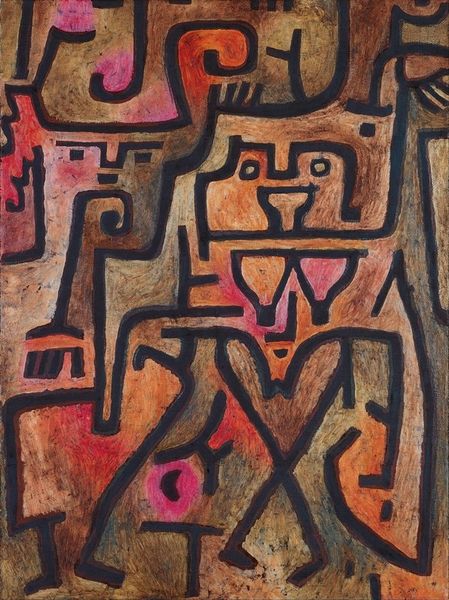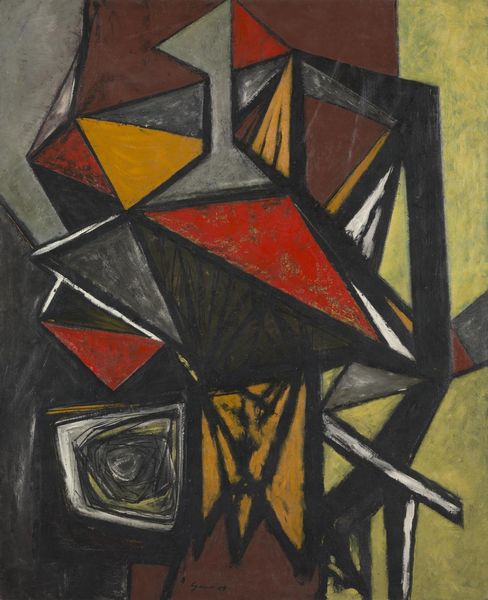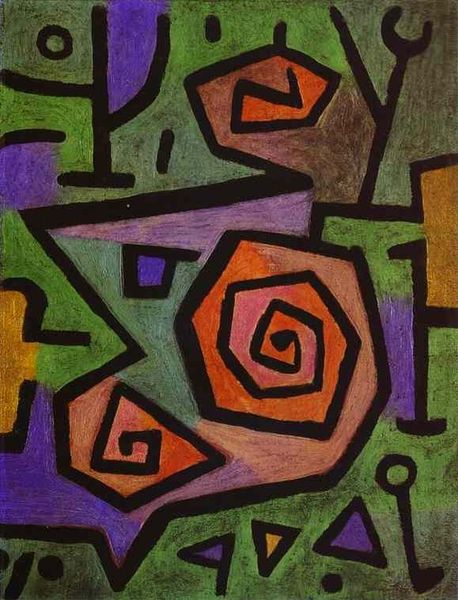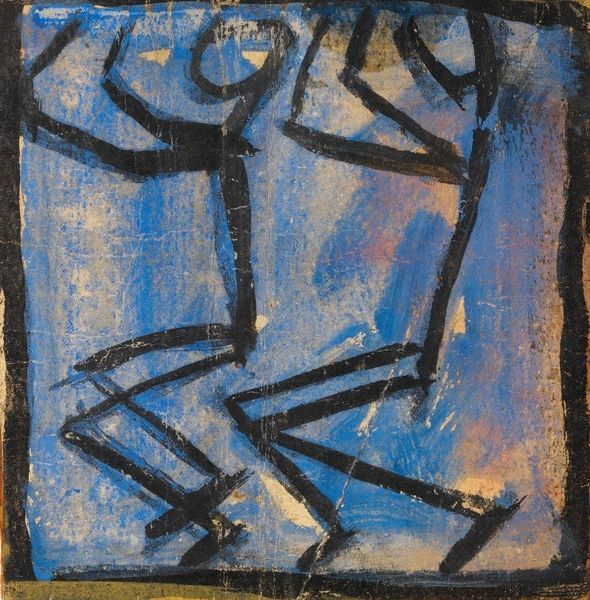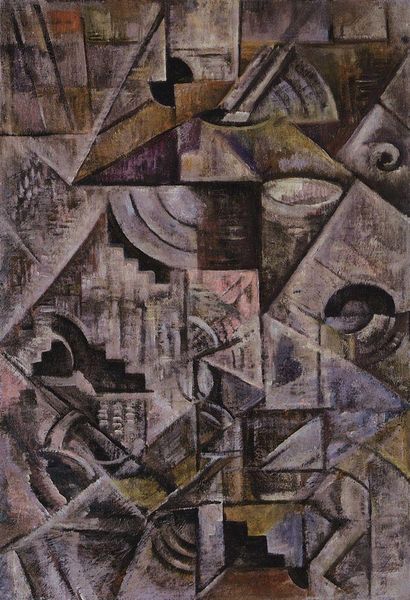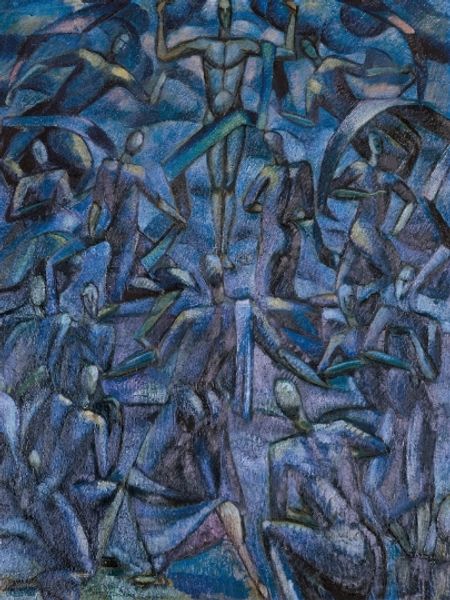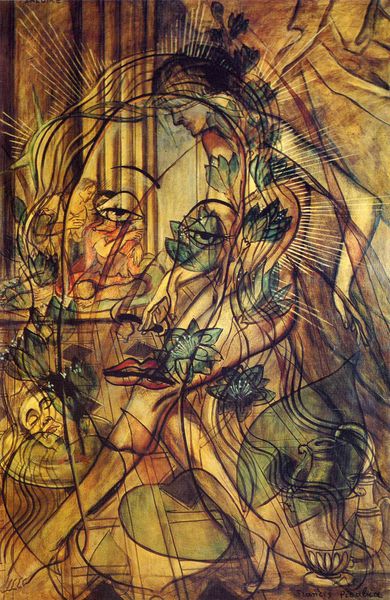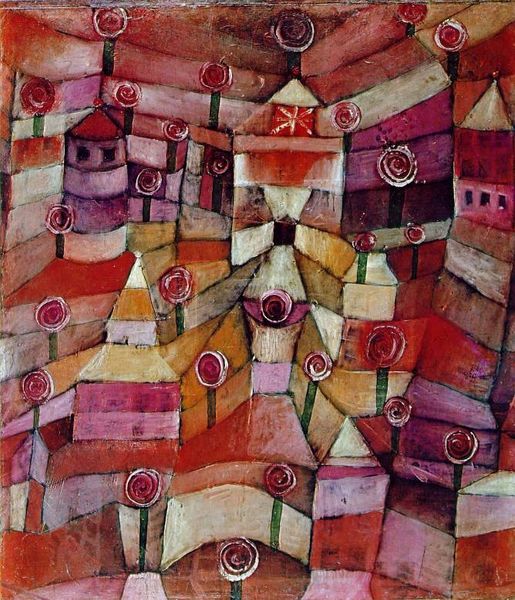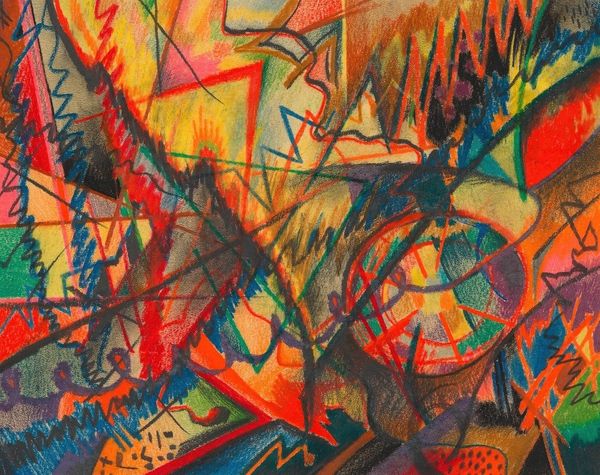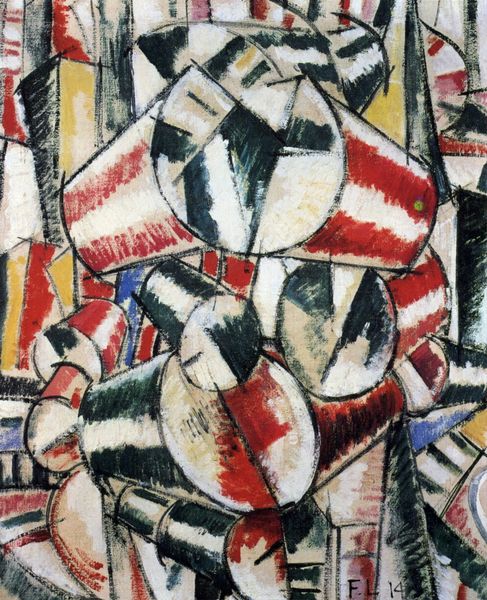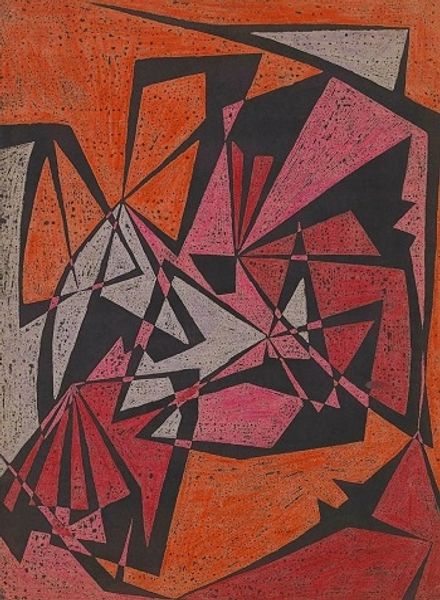
Copyright: Public Domain: Artvee
Editor: This is "Collection of Figurines" by Paul Klee, from 1926, a mixed-media piece, possibly oil pastel, on what looks like canvas. There's something so primal and arresting about the raw application of color, and those geometric shapes almost feel like a forgotten alphabet. What do you see in this work? Curator: I'm struck by the layering. The application of pigment isn’t about illusion but about process, about the artist’s hand physically building up these forms. Consider the social context: Klee taught at the Bauhaus, a hotbed of radical ideas about art and craft. Did they value materials in ways different than traditional painters? Editor: That's interesting, because it makes me consider the actual *labor* involved. Was Klee purposefully trying to flatten any hierarchy between ‘high art’ and craft by emphasizing the materiality and work behind it? Curator: Precisely! Look at the textured surface, the visible strokes. It rejects the illusionism prized by earlier academic painting. Think about how readily available artist materials became by the early 20th Century and how it democratized the practice of art, and how that shift can have influenced artists like Klee. What might this say about who has access to create and participate in the art world? Editor: I never thought about the materials themselves holding such significance. Curator: Klee uses very deliberate colors. This prompts further investigation to discern what emotions were attached to each shape during the Expressionism era and, by extension, whether that was an attempt by Klee to imbue feelings to otherwise simple components. The composition, then, it is a visual code to understanding human feelings at the time? Editor: It reframes my whole understanding! Considering it from the standpoint of materials and access and labor changes everything about the viewing experience for me. Thank you! Curator: Indeed, by examining the “how” and “why” of the materials and techniques, we uncover layers of meaning that might otherwise be missed.
Comments
No comments
Be the first to comment and join the conversation on the ultimate creative platform.

